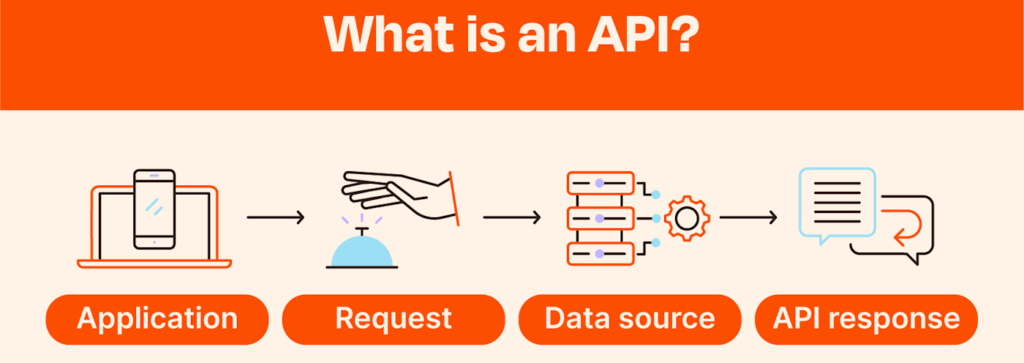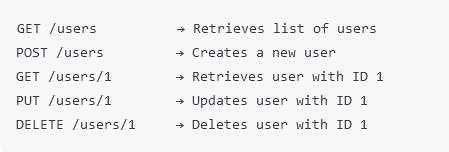REST APIs, or representational state transfer application programming interfaces, have emerged as a key component of contemporary architecture in the rapidly changing field of web development. REST APIs facilitate smooth data transfer between client and server, enabling everything from cloud service connections to powering mobile apps. However, what makes them so essential to the digital world of today? This blog delves deeply into the fundamental ideas of REST, how it operates, and practical examples that highlight its effectiveness and widespread use.

A REST API: What is it?
Basically, a REST API is a collection of guidelines that permit systems to communicate by HTTP, the same protocol that web browsers use to load websites. In his 2000 PhD dissertation, Roy Fielding introduced REST, which is an architectural style rather than a protocol. It establishes a set of limitations for creating web services that are scalable. An API is called a RESTful API when it adheres to REST standards.
REST’s main objective is to use HTTP’s statelessness to provide scalable, dependable, and quick services. By guaranteeing that every client request to the server contains all required data, this statelessness lowers server memory expense and boosts dependability.
Fundamentals of RESTful Architecture
Let’s examine the tenets of REST in order to fully comprehend how it operates:
1. No specific state.
Every client request made to the server needs to be separate. Because the server doesn’t save any context in between requests, interactions are scalable and predictable.
2. Architecture of Client-Server
It’s crucial to keep concerns apart. While the server handles data processing and storage, the client is in charge of the user interface. Teams are able to build both ends independently because of this decoupling.
3. Consistent Interface
REST APIs ease communication between many systems by relying on a consistent interface. Standardized URIs and HTTP techniques are used to accomplish this homogeneity.
4. The ability to cache
It is possible to designate server responses as either cache-able or non-cacheable. This reduces needless server burden, which enhances performance and scalability.
5. System Layers
Multiple layers (such as load balancers and proxies) can make up a REST API, each of which handles distinct duties without influencing the client.
Comprehending HTTP Methods
REST APIs carry out CRUD (Create, Read, Update, Delete) operations using common HTTP methods. This is a summary:
| HTTP Method | Operation | Description |
| GET | Read | Retrieves data from the server without modifying it. |
| POST | Create | Sends data to the server to create a new resource. |
| PUT | Update | Updates an existing resource or creates one if it doesn’t exist. |
| PATCH | Partial Update | Modifies a specific part of an existing resource. |
| DELETE | Delete | Removes a resource from the server. |
Every method has a resource URL (Uniform Resource Locator) associated with it. For example:

Resource Structure in RESTful Mode
A user, product, order, or any other entity can be considered a resource in the context of RESTful APIs. URIs are used to identify these resources, and HTTP techniques are used to manipulate them.
For example:

REST stresses that verbs shouldn’t be in URIs. Rather, the HTTP method is what determines actions.
Different Architectures vs. REST API
Despite being the most widely used API design, REST is frequently contrasted with other strategies such as GraphQL and SOAP (Simple Object Access Protocol).
| Feature | REST | SOAP | GraphQL |
| Protocol | HTTP | XML over HTTP/SMTP | HTTP |
| Data Format | JSON, XML | XML | JSON |
| Flexibility | Medium | Low (strict contract) | High (client chooses data) |
| Complexity | Low | High | Medium |
| Performance | High (lightweight) | Medium | High (reduces over-fetching) |
Through its simplicity, maturity, and ease of integration, REST is still the favored option for the majority of developers.
Applications of REST APIs in the Real World
There are REST APIs everywhere. Here are some real-world examples:
1. Online shopping portals
Using RESTful endpoints, Amazon’s APIs let developers manage orders, search products, and read reviews.
2. Integration of Social Media
REST APIs are made available to developers by Facebook, Instagram, and Twitter so they may post content, manage user data, and view timelines.
3. Location and Weather Services
REST APIs are offered by apps such as OpenWeatherMap and Google Maps to retrieve data in response to location queries.
4. Web and Mobile Apps
RESTful services are used by contemporary apps developed using React Native, Flutter, or Angular to retrieve dynamic data from backends.
Best Practices for REST API Design
A well-designed API is intuitive, scalable, and secure. Here are some industry best practices:
- Use nouns in endpoints, not verbs: /users instead of /getUsers
- Implement versioning: /api/v1/users to manage breaking changes
- Return proper HTTP status codes: 200 OK, 201 Created, 404 Not Found, 500 Internal Server Error
- Enforce authentication & authorization using tokens (e.g., JWT)
- Provide pagination and filtering for large data sets
- Include rate limiting to protect the API from abuse
Concluding thoughts
The hidden engine of digital change is now REST APIs. They are the preferred option for contemporary web and mobile apps due to their ease of use, scalability, and widespread acceptance. Knowing how REST APIs function and how to create them effectively will continue to be a crucial ability for developers, architects, and decision-makers as companies continue to digitize.
REST APIs provide easy and effective communication between your systems, whether you’re linking micro services, managing user data, or integrating payment gateways.

